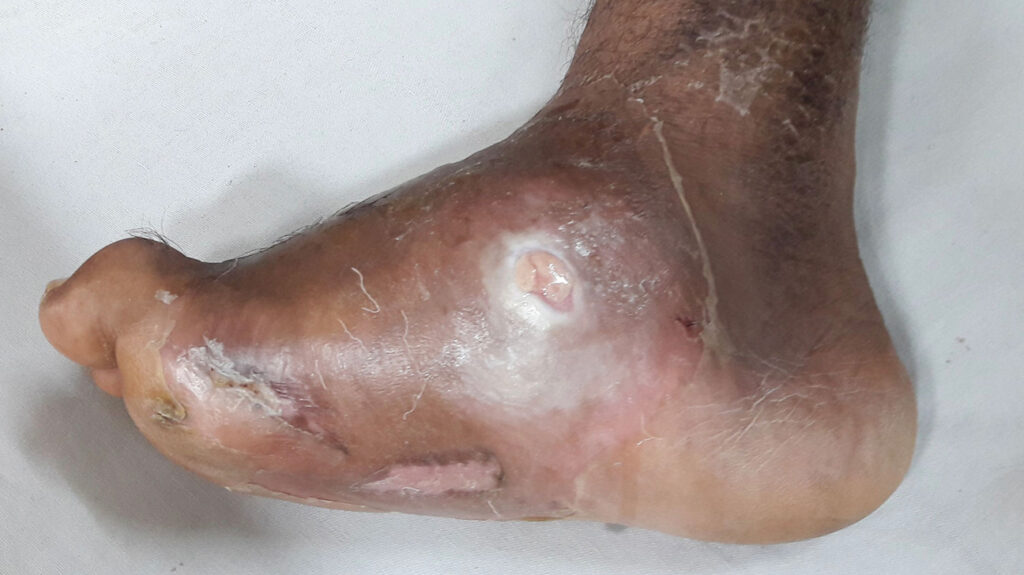Charcot foot, also known as Charcot arthropathy or neuropathic osteoarthropathy, is a serious condition affecting the bones, joints, and soft tissues of the foot and ankle. It is most commonly associated with individuals who have significant peripheral neuropathy, such as those with long-standing diabetes.
- Pathophysiology:
- Charcot’s foot develops as a result of nerve damage (neuropathy), which leads to a loss of sensation in the foot. Without normal sensation, minor injuries or stresses to the foot may go unnoticed. This can lead to fractures and dislocations. Due to the lack of pain response and continued walking on the injured foot, progressive damage occurs, leading to deformities.
- Clinical Presentation:
- The onset can be sudden or gradual, presenting with swelling, redness, and a warm foot, often without significant pain.
- As the condition progresses, deformities such as an altered foot shape (e.g., rocker-bottom foot) may develop.
- There can be a loss of function and instability in the foot, increasing the risk of ulcers and infections.
- Diagnosis:
- Diagnosis is primarily clinical, supported by imaging studies such as X-rays, MRI, or bone scans to assess bone and joint changes and rule out osteomyelitis (bone infection).
- Management:
- The primary goal is to prevent further damage and deformity. Initial management involves immobilization of the foot, usually with a total contact cast or specialized orthopedic footwear to offload pressure from the affected area and allow for healing.
- Strict blood sugar control in diabetics to prevent further nerve damage.
- Surgery may be required in advanced cases or when deformities are severe.
- Regular foot examinations and patient education on foot care are crucial for those with neuropathy to prevent Charcot foot and other complications.
Overall, Charcot foot is a complex condition requiring early recognition and a multidisciplinary approach to prevent complications, including limb-threatening ulcers and amputations.

